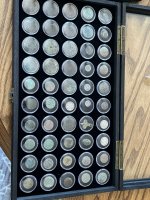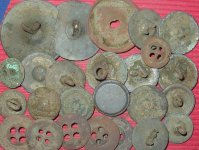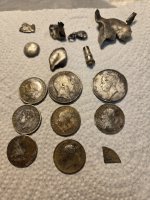ECS
Banned
Salvor 6, neither have I, so I had to research this tale.Here is a new twist to the CSA Treasure story:
Confederate gold treasure may be in Lake Michigan
I never heard of this one before. The two researchers really did their homework on this. ECS, what can you tell us about Colonel Robert Minty?
I am not so sure about their homework, it appears to mostly piece together lore.
US Col Robert Horatio George Minty, 4th Michigan Cavalry was NOT court marshalled in 1864, but was honorably mustered out, April 15, 1865. Minty did not capture Jefferson Davis, but members of his 4th did capture Davis and nephew CSA Capt John Taylor Wood. After the War, he returned to Michigan, was involved with a railroad there, but never returned to Georgia, and was NEVER involved with the Atlantic & Gulf Railroad.
http://civilwarcavalry.com/?p=451
Marauders did steal part of the treasury at Chennault's Plantation (read earlier post on this thread) in Washington, Wilkes count, Georgia. The Atlantic & Gulf Railroad does pass through Washington, Georgia.
Davis was captured at Irwinville, Irwin county, Georgia- Lincoln county is located in NE Georgia on the South Carolina border, but does have a town named Chennault.
The article on the Lake Michigan Confederate Gold Bullion, relates that at a coin show a "piece of gold" was identified as from the Confederate treasury. How?
On another post on this thread relates the missing gold & silver bars that disappeared from Dalonega, Lumpkin county, Georgia that did have Confederate assay marks, but was no where near 2 million dollars worth.
With all the misinformation in this Michigan tale, I believe this is lore based on an earlier tall tale.
Thanks for lead, I do enjoy the research journey.





